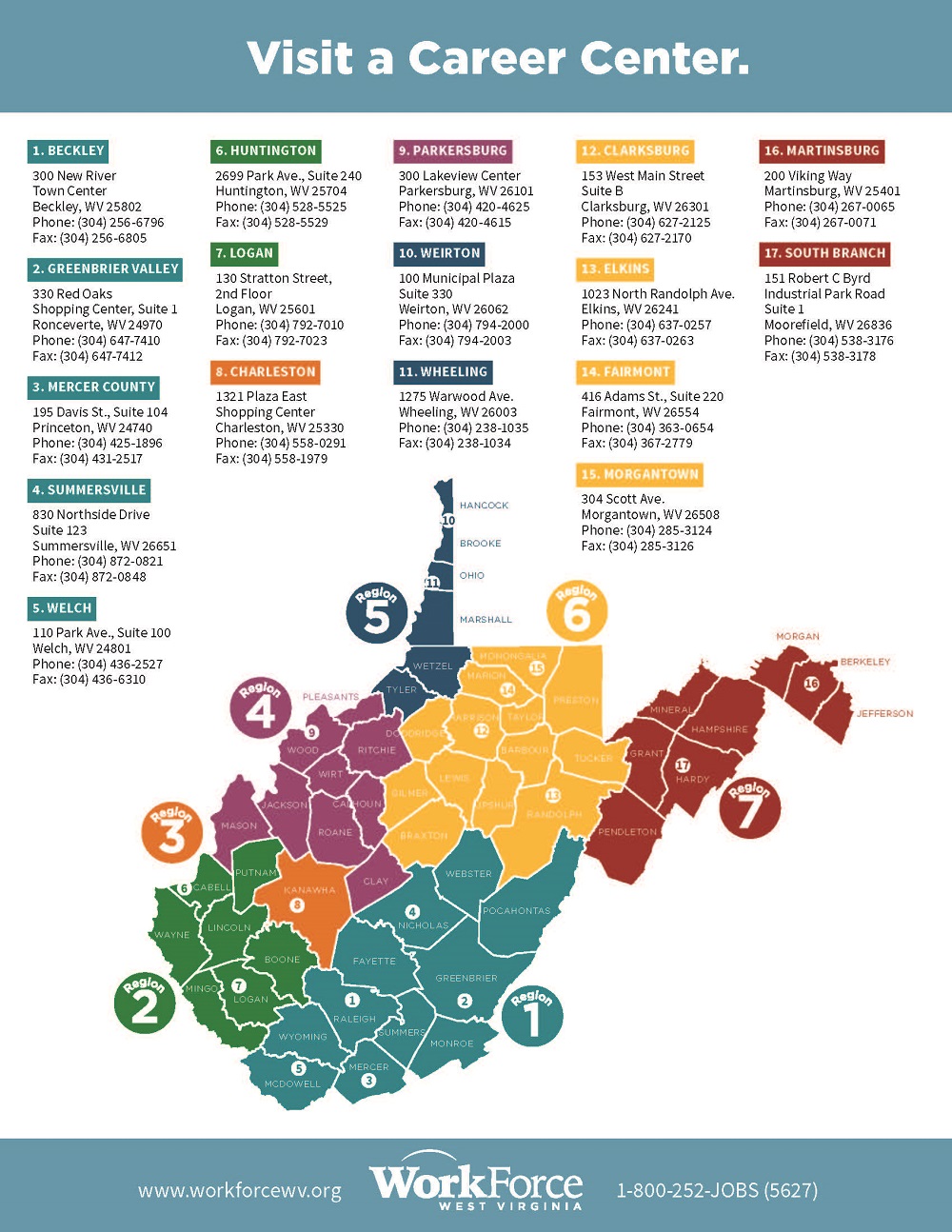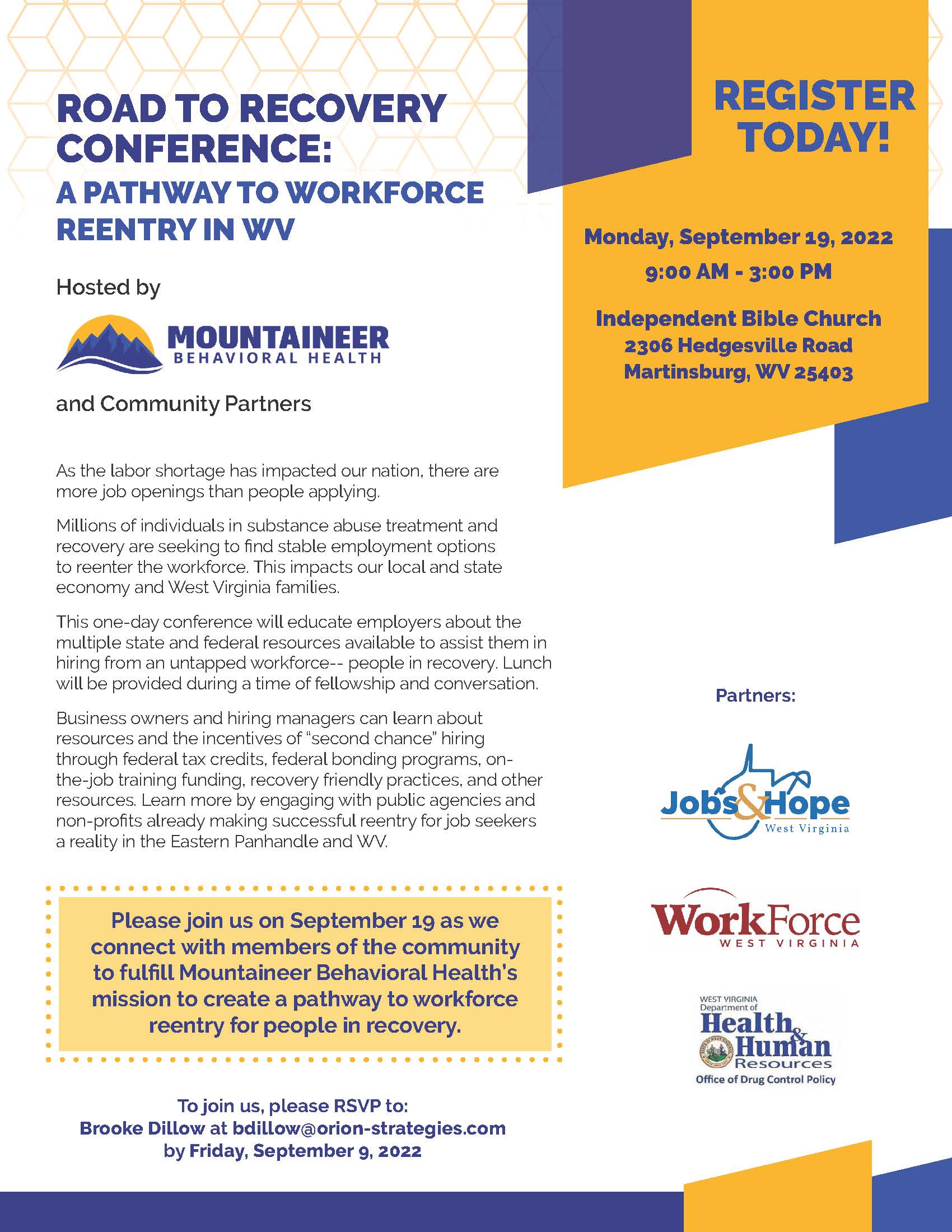West Virginia’s Workforce: A Comprehensive Overview of Employment Opportunities
Related Articles: West Virginia’s Workforce: A Comprehensive Overview of Employment Opportunities
Introduction
With enthusiasm, let’s navigate through the intriguing topic related to West Virginia’s Workforce: A Comprehensive Overview of Employment Opportunities. Let’s weave interesting information and offer fresh perspectives to the readers.
Table of Content
West Virginia’s Workforce: A Comprehensive Overview of Employment Opportunities

West Virginia, a state steeped in history and natural beauty, offers a diverse array of employment opportunities across various industries. While traditionally known for its coal mining and energy sectors, the state has undergone significant economic diversification in recent years, presenting new avenues for career growth and development. This article delves into the current state of the West Virginia workforce, exploring its key sectors, challenges, and future prospects.
A Historical Perspective
Historically, West Virginia’s economy was heavily reliant on coal mining and related industries. The state’s abundant coal reserves fueled power plants and manufacturing facilities, contributing significantly to its economic growth. However, the decline of the coal industry in recent decades has led to job losses and economic challenges.
The Shift Towards Diversification
Recognizing the need for economic transformation, West Virginia has actively pursued diversification strategies. This shift has resulted in the emergence of new sectors, including:
- Healthcare: The state’s healthcare industry is experiencing steady growth, driven by an aging population and increased demand for medical services. Hospitals, clinics, and healthcare providers are major employers, offering positions in nursing, medical technology, administration, and other related fields.
- Education: West Virginia’s strong public education system, coupled with the presence of several universities and colleges, creates a robust education sector. Teaching, research, and administration positions are available in various educational institutions.
- Tourism and Hospitality: West Virginia’s natural beauty, from the Appalachian Mountains to its scenic rivers and forests, attracts a significant number of tourists. The tourism and hospitality industry provides employment opportunities in hotels, restaurants, attractions, and recreational facilities.
- Manufacturing: While coal-related manufacturing has declined, other manufacturing sectors, such as aerospace, automotive parts, and food processing, are experiencing growth. These industries offer skilled labor positions in production, engineering, and management.
- Technology and Innovation: West Virginia has made strides in developing its technology sector, with the emergence of startups and tech companies. This growth has created opportunities in software development, data analysis, cybersecurity, and other related fields.
- Agriculture: West Virginia’s agricultural industry, although traditionally focused on livestock and dairy farming, is exploring new opportunities in specialty crops, organic farming, and agritourism.
Challenges and Opportunities
Despite these positive developments, West Virginia’s workforce faces several challenges:
- Workforce Skills Gap: The state’s workforce faces a skills gap, with a mismatch between the skills required by employers and the skills possessed by available workers. This gap is particularly evident in high-demand fields like technology and healthcare.
- Rural Workforce: West Virginia’s rural nature presents challenges in attracting and retaining skilled workers. Limited access to high-speed internet and transportation infrastructure can hinder economic development.
- Low Wages: Average wages in West Virginia are lower than the national average, making it difficult to attract and retain skilled workers.
To address these challenges, West Virginia is focusing on:
- Workforce Development Programs: The state is investing in workforce development programs to enhance the skills of its workforce and bridge the skills gap. These programs include apprenticeships, vocational training, and online courses.
- Infrastructure Improvements: Efforts are underway to improve infrastructure, particularly in rural areas, by expanding broadband internet access and enhancing transportation networks.
- Economic Development Initiatives: West Virginia is actively pursuing economic development initiatives to attract new businesses and create jobs. These initiatives focus on fostering innovation, supporting entrepreneurship, and promoting tourism.
FAQs about Jobs in West Virginia
Q: What are the most in-demand jobs in West Virginia?
A: The most in-demand jobs in West Virginia are in the healthcare, education, and technology sectors. Nursing, teaching, software development, and data analysis are high-demand fields.
Q: What are the average salaries in West Virginia?
A: The average salary in West Virginia is lower than the national average. However, salaries vary significantly depending on industry, location, and experience.
Q: What are the benefits of working in West Virginia?
A: West Virginia offers a high quality of life with affordable housing, scenic beauty, and a strong sense of community. The state also has a low cost of living compared to other parts of the country.
Q: What are the challenges of working in West Virginia?
A: Challenges include a skills gap, a rural workforce, and lower average wages compared to other states.
Tips for Finding Jobs in West Virginia
- Network with Professionals: Attend industry events, join professional organizations, and connect with individuals in your desired field.
- Utilize Online Job Boards: Explore job boards like Indeed, LinkedIn, and Monster to find open positions in West Virginia.
- Contact Local Businesses: Reach out directly to businesses in your area of interest to inquire about job openings.
- Consider Relocation: If you are willing to relocate, West Virginia offers affordable housing and a desirable quality of life.
Conclusion
West Virginia’s workforce is undergoing a period of transformation, driven by diversification efforts and a focus on workforce development. While challenges remain, the state’s commitment to economic growth and innovation is creating new opportunities for individuals seeking fulfilling careers. By embracing its unique strengths and addressing its challenges, West Virginia is poised to establish itself as a dynamic and attractive destination for a skilled and diverse workforce.







Closure
Thus, we hope this article has provided valuable insights into West Virginia’s Workforce: A Comprehensive Overview of Employment Opportunities. We appreciate your attention to our article. See you in our next article!
